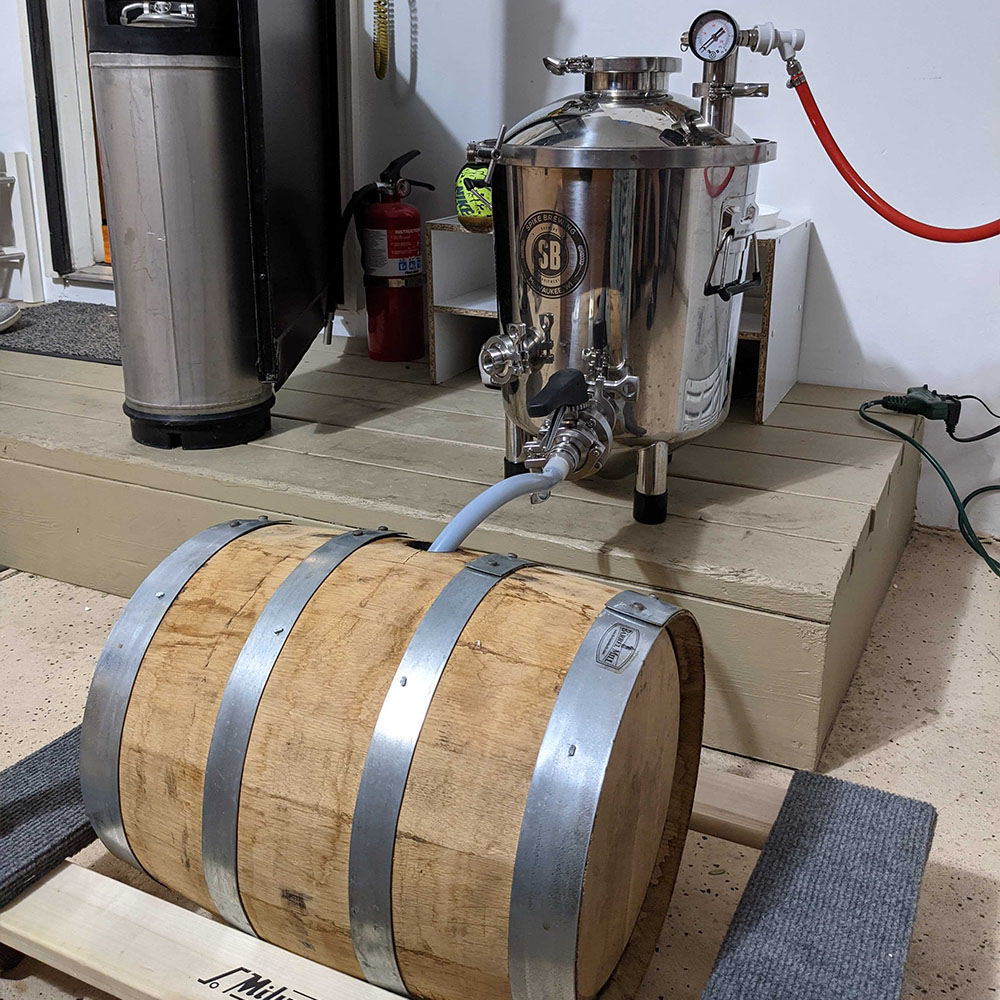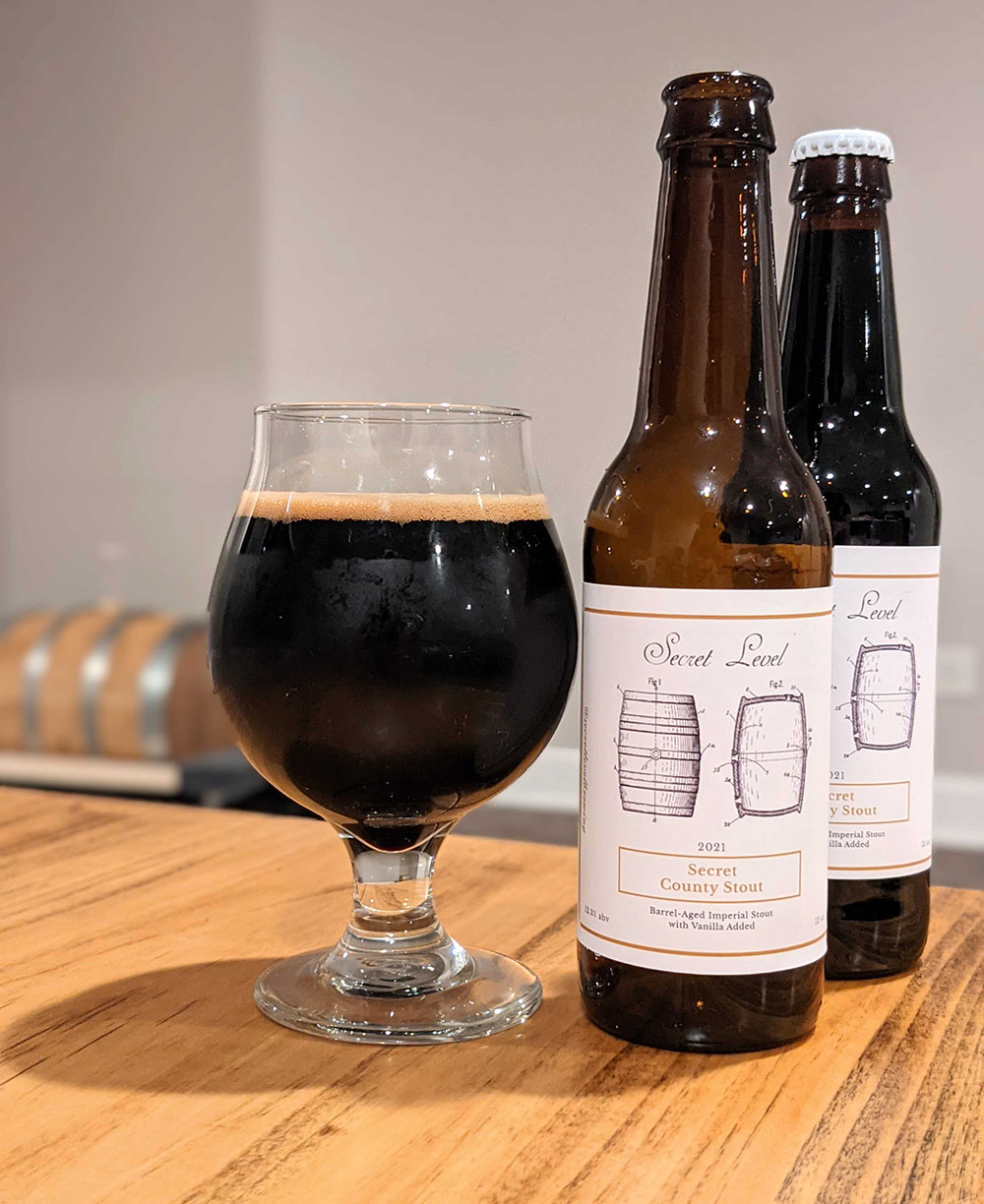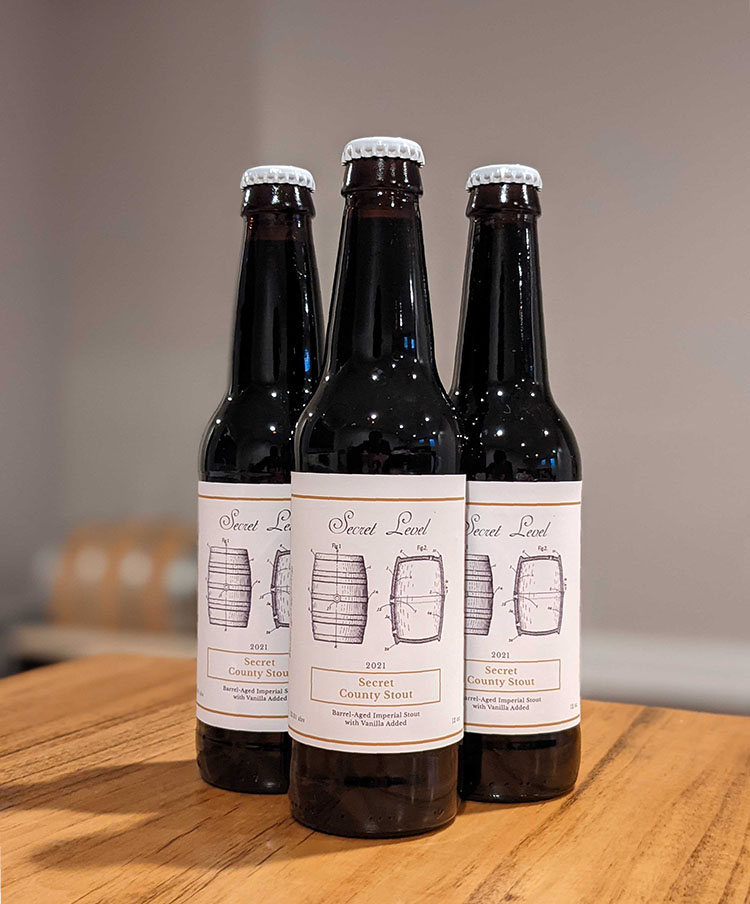
Today marks one year since I got my first 5 gallon used bourbon barrel for my birthday. Barrel-aging beer was a little intimidating at first, but the entire process was very easy. Here's what I've learned.
Before ordering the barrel, you have to find the right one. But even before that, you have to brew a beer. The last thing you want is your barrel sitting around and going dry. Make sure that you have a beer nearing the end of fermentation or otherwise ready to go in the barrel as soon as it arrives.
I've found a few good sources for barrels. I've ordered from two of them so far and they were both great. The barrel took around one week to arrive and was basically ready to go.
One thing that I've learned over years of brewing big stouts and listening to Craft Beer & Brewing podcast is that you don't want to barrel age a dry beer. The bourbon will take hold and your beer will be very hot. Brew your stout for 6-12 months from now, rather than for immediate consumption. To me, this means:
 Draining the bourbon from the barrel before putting the stout in.
Draining the bourbon from the barrel before putting the stout in.Main concern here is having a leaky barrel or one that's too dry. Luckily, my barrel was very fresh and smelled like delicious bourbon when it arrived, but not all may be so lucky. Let's talk about rinsing and swelling.
You likely won't have to take this step if you don't see any leaks, but I went through with it just in case. Rinsing the barrel keeps it wet. This is done to prevent leaks or to keep the barrel fresh if your beer isn't quite ready.
You can rinse your barrel with warm water, but this is thought to strip some of the barrel flavor out. I added a bottle of bourbon (750ml or ~1/5 gal), swirled it around for 5 minutes, then left the bourbon inside, sloshing it around every few days until my beer was ready.
My friend, who skipped this step, had his beer come out a little smoother out of the gate while my beer was a bit "hot" for the first 1-2 months. While this is fine, I wonder how ours beers will compare in the long-run.
An alternative to rinsing is to swell the barrel from the outside. You can do this by pouring water over the barrel, or even better, steamy hot water. The wood expands, sealing any cracks or openings that may have occurred as the barrel dried during transport.
 Transferring the second beer into barrel.
Transferring the second beer into barrel.Unlike commercial 55-gallon barrels, 5 gallon barrels have a higher surface area of oak to beer. Beer aged in a 5 gallon barrel makes contact with a little over two times the oak of the beer aged in a 55 gal barrel. This means that the beer will age two times faster. One year in a commercial barrel can be achieved in 4-5 months in a 5 gallon barrel. This also means that you can put another beer in the barrel after!
I aged my stout for 4 months before pulling it out. Here's the diary of my tastings:
Oh, yes. Since aging in a small barrel happens so much faster, the barrel still has delicious bourbon and vanillin character left to infuse the beer with after the initial 4-6 month aging period. Many homebrewers put another beer into the barrel after the first one is out. I definitely rinsed the barrel with bourbon again, this should refresh some of the bourbon flavors that the barrel holds. I would recommend a 6 month period for the second beer to achieve desired bourbon notes, but sample often to get your beer to where you like it.
What was surprising to me is how much bourbon the barrel absorbed when I rinsed it. After putting in a whole bottle of bourbon, I only got half of the bottle out when my beer was ready to go in a month later. My barrel may have dried out somewhat while on it's way to me.
As noted above, my friend also aged a stout in the same Reservoir barrel for the same amount of time. My stout was very boozy straight out of the barrel. However, given the initial conditioning for 2 months, it was right where I wanted it to be. I attribute the initial heat levels to the extra bourbon that I put into the barrel, as his was much smoother 1 month after being pulled out. I wonder if this means that my beer will have better bourbon character in the long run (6+ months) than his. The jury is still out.
 Bottled, labeled and distributed. Just in time for the holidays!
Bottled, labeled and distributed. Just in time for the holidays!With my first barrel-aged brew, I wanted to go with a proven recipe.
Fermented with US-05 and S-04 yeasts.
OG: 1.120
FG: 1.034
11.3% ABV
After the beer was finished fermenting (2ish weeks), it went straight into the barrel.
 Bottles came out nicely. Guide on printing labels coming soon! (If it hasn't already)
Bottles came out nicely. Guide on printing labels coming soon! (If it hasn't already)I have to admit, I'm pretty proud of this beer, given that it's my first true barrel-aged creation. Oak cubes are fun and all, but I've never quite gotten the same character with them as I did with this barrel. Here's to hoping I can replicate this type of beer again!
Aroma: Milk chocolate truffle, hint of bourbon pecan pie.
Flavor: Milk chocolate, vanilla macaroon with a boozy finish. Whiskey notes really come in the following sips along with a light raisin note, followed by Betty Crocker brownie batter.
I'm hoping to do a side by side with Bourbon County Stout in the coming weeks, but despite the recipe being very close, it still feels like a somewhat different beer. I think using Simpsons and Crisp malts as opposed to Briess (like Goose Island do) has a pretty large impact here, with Simpsons bringing out more milk chocolate and brownie notes. Added vanilla may have something to do with that as well... But you won't see me complaining here, this is a beer that I'd pay good money for at a brewery.
Another factor to think of is barrel sourcing. I imagine Goose Island's Bourbon County barrel connections are slightly better than mine ;)
If you give barrel-aging a chance, I'd love to hear how it went. Brew on!